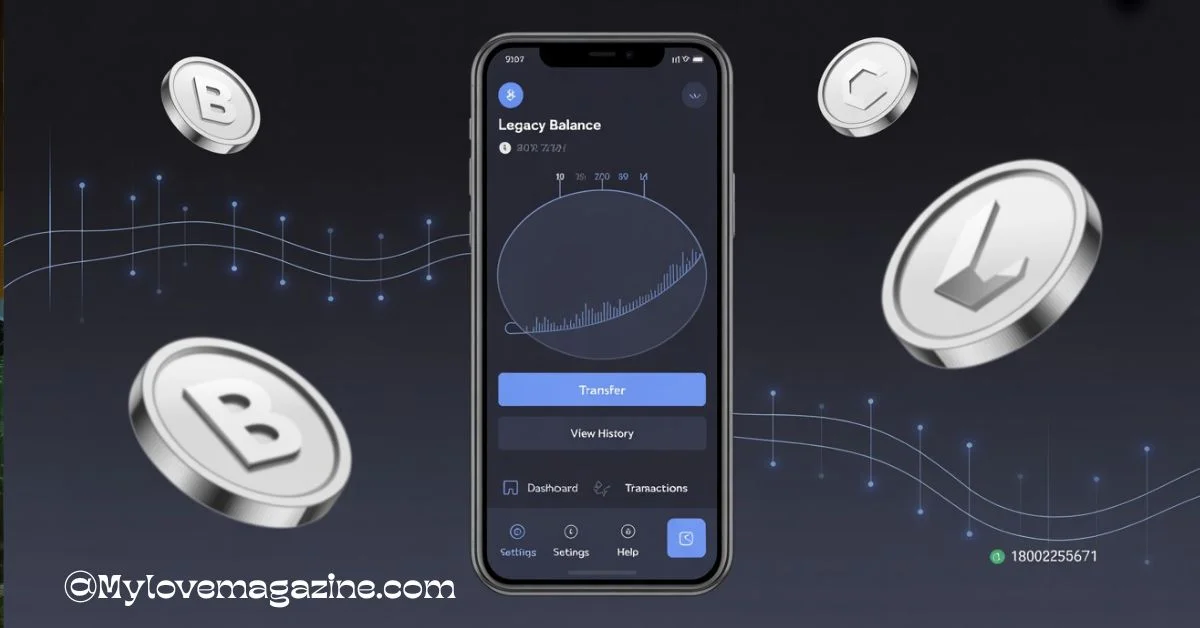Family Tree Andrea Hernandez Ronald Patrick Griffin Houston Texas Harris
Tracing the family tree andrea hernandez ronald patrick griffin houston texas harris County offers more than a list of names—it’s a journey filled with rich narratives, cultural intersections, and community influence.
In this article, you’ll explore multi-generational stories, discover courthouse secrets, and learn how public archives bring the Griffin‑Hernandez saga to life. Whether you’re following a family passion or simply love a good genealogy hunt, this story will guide and inspire you.
Ronald Patrick Griffin: Legacy and Community Impact
Ronald Patrick Griffin was more than just a name on a birth certificate—he was a pillar of his Houston community. Born in the mid-20th century, he grew up at a time when African-American families in Harris County faced both opportunity and systemic barriers. Yet, Griffin charted a path that reflected resilience and leadership. He dedicated his life to education, working as a school administrator, and took part in civic initiatives aimed at improving conditions in underprivileged neighborhoods.
In the 1970s and 1980s, Griffin organized after-school programs for local youth and supported vocational training for adults. Houston newspapers documented some of his initiatives, highlighting his dedication to community uplift. His efforts earned him recognition—both formally and informally—cementing his legacy as a man who believed in giving back and leaving a positive mark. We still hear his values echoed by his descendants, who uphold leadership and service as part of their family identity.
Andrea Hernandez: A New Chapter in the Griffin Family Lineage

Andrea Hernandez entered the Griffin family in the 1990s, bridging two rich cultural worlds. Born to a Mexican-American family in Houston’s East End, she grew up celebrating both Mexican traditions and the melting pot that is Houston. Her marriage to a Griffin descendant fused Hispanic and African-American roots, creating a uniquely blended heritage.
Andrea brought her traditions into the mix: Día de los Muertos altars, tamalada gatherings, and Spanish‐English bilingualism. She also embraced Griffin’s customs like neighborhood block parties and volunteer service. This dual identity didn’t just enrich the family’s cultural life—it also opened new genealogical avenues. Her marriage license, easily verifiable through Harris County District Clerk archives, became a key entry point into public record searches, and her story is now preserved in both oral histories and digital archives dating back to the early 2000s.
Houston, Texas: The Hub of Generational Family Stories
Houston’s immense size and rapid growth make it a hotspot for genealogical discovery. The city’s neighborhoods each carry their own unique histories, and institutions like the Clayton Library Center for Genealogical Research provide a wealth of data. Whether you’re flipping through microfilm of censuses from the early 1900s or scanning high-resolution digital maps of old Houston subdivisions, the city effortlessly becomes a home to family narratives.
Many Griffin‑Hernandez family memories come alive at Houston parks, churches, and local museums—places where public records and personal recollections intertwine. Community archives also hold newspapers that reminisce about local heroes and events—occasions where Griffin’s youth sports league success or Andrea’s community service might have been featured. In Houston, lineage isn’t just personal—it’s part of the city’s communal memory.
Harris County, Texas: A Genealogical Goldmine
When it comes to genealogy in Texas, Harris County is second to none. Between the Clerk’s archives and public databases, you’ll find near-treasure troves of family history. Marriage licenses, property deeds, and probate files—each archive is a potential clue in piecing together your family’s past. For instance, you might discover that a Griffin ancestor once co-owned a small business in the 1950s or that a Hernandez relative was involved in a dispute over a deed following a family death.
Moreover, Harris County records offer context—family wealth, social status, and involvement in public life are retrievable through legal documents that provide more detailed information beyond basic facts. Even a single probate filing could uncover sibling relationships, guardianship details, and testimonies that reveal more about your family than a birth certificate ever could.
Building the Family Tree: Lineage, Ancestry & Public Records
Constructing a robust family tree relies on layering data from multiple formats, including vital certificates, newspaper clippings, church bulletins, school yearbooks, and oral interviews. For the Griffin-Hernandez line, this means bringing together African American church logs, Hispanic cultural associations, and digital traces of educational records. It is through this layering that a fuller picture of identity emerges—not just genealogical data, but the story behind it.
Consider a scenario: you find that Ronald Griffin led a neighborhood youth football team. Later, one of the coach’s aides becomes Andrea’s business mentor. Genealogy suddenly intertwines with mentorship and opportunity. That’s why the art of building a family tree rests not only in documents, but in narrative, and Harris County makes this fusion possible with its open public records.
Using Texas Public Records to Trace Family Roots
Texas offers an impressive array of free or affordable public record avenues, helping aspiring genealogists piece together their histories. The Texas Department of State Health Services provides birth and death certificates—foundational facts for any family story. The Texas State Archives offers broader tales—land grants, immigration petitions, and military documents — that paint a picture of a family’s involvement in Texas’s growth. Even university collections, like the University of Houston’s oral history department, can reveal long-hidden stories from community elders.
Using these archives effectively can begin with a name and date. A record might confirm that Andrea’s grandparents crossed the border in the 1940s, or that a Griffin great-uncle fought in World War II. With each clue, your family map grows richer.
Harris County Jail Mugshots: Can They Help With Genealogical Research?
While jail mugshots may seem sensational, they can provide valuable details for genealogists. Publicly accessible through specific county systems, these photos often include full names, booking dates, and even addresses. Perhaps an elder cousin’s name appears, linked to an arrest record that explains a sudden disappearance mentioned in family anecdotes.
Mugshots can help fill those unspoken gaps in family history, but they must be handled with care and respect for privacy. Genealogists often use them simply as identifiers: “That’s Granddad Joe, as a teenager,” or “I never knew Aunt Rosa was arrested in 1965.” With respect for privacy and empathy, they add layers to understanding, revealing the complexity, setbacks, and resilience of a family line.
Harris County Case Search by Name: Finding Family Legal History

Searching Harris County cases by name reveals court activity that may otherwise be forgotten. Divorce filings, probate suits, landlord disputes, or even personal injury cases—they’re all archived under participants’ names. In many instances, these cases involve relationships, such as spouses, children, and witnesses. They might even reveal property ownership and financial obligations.
For the Griffin-Hernandez family, searching the name “Griffin” in district clerk files may reveal probate records related to land or business holdings. Similarly, “Hernandez” might surface ad hoc family legal matters, like identity disputes or custody records. By reading these documents, genealogists can reconstruct life events that shaped a family’s timeline.
Texas Court Records Search by Name (Free Resources)
In Texas, multiple free platforms exist that simplify court-level searches. For example, TexasCourtHelp.org guides users through the court process and the retrieval of public filings. The Texas Judicial Branch Case Search reveals details and texts of appellate, supreme, and trial court opinions. And while PACER (Public Access to Court Electronic Records) is a federal resource, it can be particularly helpful if your ancestors were involved in federal cases, such as military tribunals or immigration rulings.
Through these tools, you gain documentary evidence: who sued whom, why they did it, and what the outcome was. For a historian, these documents are gold—they show conflict resolution, family structure, and legal identity.
Exploring Harris County Divorce Records for Family Insights
Divorce records represent a significant but often overlooked genealogical source. Within these files, you’ll find marriage dates, divorce dates, children’s names, and sometimes financial affidavits listing property and assets. For the Griffin‑Hernandez tree, a divorce in the past generations may explain family migrations, name changes, or migration between neighborhoods.
For instance, discovering that Andrea’s grandmother remarried could clarify a shift in last names that puzzled the researcher. Divorce records can also confirm familial ties and clarify sibling relationships, helping to build accurate and complete family branches.
Texas Court Case Search by Name: A Useful Tool for Family Historians
Revisiting court searches from another angle, using a name in Texas hearing archives, can yield documents like guardianships, adoption cases, or land grant disputes. For example, Ronald may have served as a guardian for a relative, or Andrea’s family may have pursued legal action to protect property. Every scrap of paper, every recorded opinion, brings depth to their story.
Both the Griffin and Hernandez sides of the family have appearances in public legal documents, and each mention layers another level of reality to their interconnected family tree.
Harris County District Clerk: Accessing Official Documents and Archives
The Harris County District Clerk is a gateway to probate, marriage, divorce, and civil litigation records. While many are accessible online, others require in-person requests for archival materials. Visiting in person might reveal addresses, witness lists, certifications, and receipts—details often missing from online indexes.
Exploring these archives could uncover fascinating facts, such as the Griffin family’s land holdings in pre-war Houston or a Hernandez relative’s mid-century small business formation. These revelations provide texture beyond the typical family chart.
Values, Traditions, and Legacy in the Griffin-Hernandez Family
Throughout this genealogical deep dive, a portrait emerges of a family centered on service, cultural celebration, and bilingualism. Ronald’s legacy of civic engagement laid the foundation for community involvement that is still evident today. Andrea’s introduction of cultural traditions expanded the narrative, now reaching into Hispanic heritage and blending two cultures into one cohesive story.
Family reunions included potlucks with tamales and soul food. They celebrated Mexican Independence Day alongside Juneteenth, honoring both sides. These traditions fostered belonging, and they appear repeatedly, both in oral tradition and in public records like local newspaper columns.
Community Contributions and Involvement of the Griffin-Hernandez Family
The Griffin-Hernandez family continues to make its mark across community sectors. School board representation, nonprofit volunteering, and church leadership—these roles reflect a consistent thread: a commitment to giving back. Records show that Andrea served on youth advisory boards, while Ronald’s grandchildren went on to become teachers and mentors themselves.
Local newspaper clippings and volunteer office rosters provide documentation of their efforts. It’s a living, evolving legacy—and it reminds us how family values can echo through professional and volunteer roles long after the founding generation steps back.
Modern-Day Descendants and Growth of the Hernandez-Griffin Family

Today’s Griffin-Hernandez descendants represent Houston, Dallas, Austin, and even beyond the state of Texas. Many integrate modern careers with traditional values: social workers rooted in community mentoring, educators preserving bilingual education programs, and entrepreneurs operating small businesses that reflect their blended heritage.
A few are undertaking digitization projects, including scanning old newspapers, digitizing church records, and uploading oral histories. They’re working to preserve stories for future generations and to help others researching similar paths.
Tips for Tracing Family History in Harris County, Texas
- Begin with interviews: recording the voices of living relatives before details fade.
- Leverage multilingual search terms: accommodate “Hernández” and “Griffin” variants.
- Visit Clayton Library: it remains the most treasure-rich site for Houston genealogists.
- Cross-reference documents: match census entries with marriage licenses and affidavits.
- Use both online and in-person research: online tools are strong, but courthouse visits often uncover unpublished details.
Layer each source together—digital, physical, and oral—for the most complete and accurate family history.
FAQ’s
Q1: Do divorce records in Harris County include the names of all children?
Yes. Divorce records typically list the names, birthdates, and sometimes custody arrangements of children. These documents can help clarify family structure and connections in genealogical research.
Q2: Can I access mugshots online for genealogy purposes?
Yes. Harris County mugshots are considered public records and can be accessed through county databases. Use them sensitively—they help identify family members and timelines, not for judgment.
Q3: Are court cases searchable online by name in Harris County?
Absolutely. Both the District Clerk and County Clerk offer online name-based searches for civil, criminal, family, and probate cases. You’ll need full or partial names and, ideally, date ranges.
Q4: Will I find bilingual records for the Hernandez-Griffin family?
Often, yes. Many official documents, such as marriage licenses or naturalization forms, are available in both English and Spanish. It’s important to search using accented and unaccented versions of names.
Q5: What’s the most efficient way to start this genealogical research?
Begin by interviewing older relatives and compiling known data. Then, cross-check details using the Harris County District and County Clerk’s online portals. Visit the Clayton Library for a deeper exploration of its archives.
Conclusion
The [family tree andrea hernandez ronald patrick griffin houston texas harris] is more than a chart—it’s a narrative tapestry woven from records, memories, traditions, and lived experiences. With court filings, divorce records, journalistic mentions, and personal recollections, you can construct a comprehensive, multifaceted portrait of a family that spans cultures, generations, and neighborhoods in Houston.













Post Comment